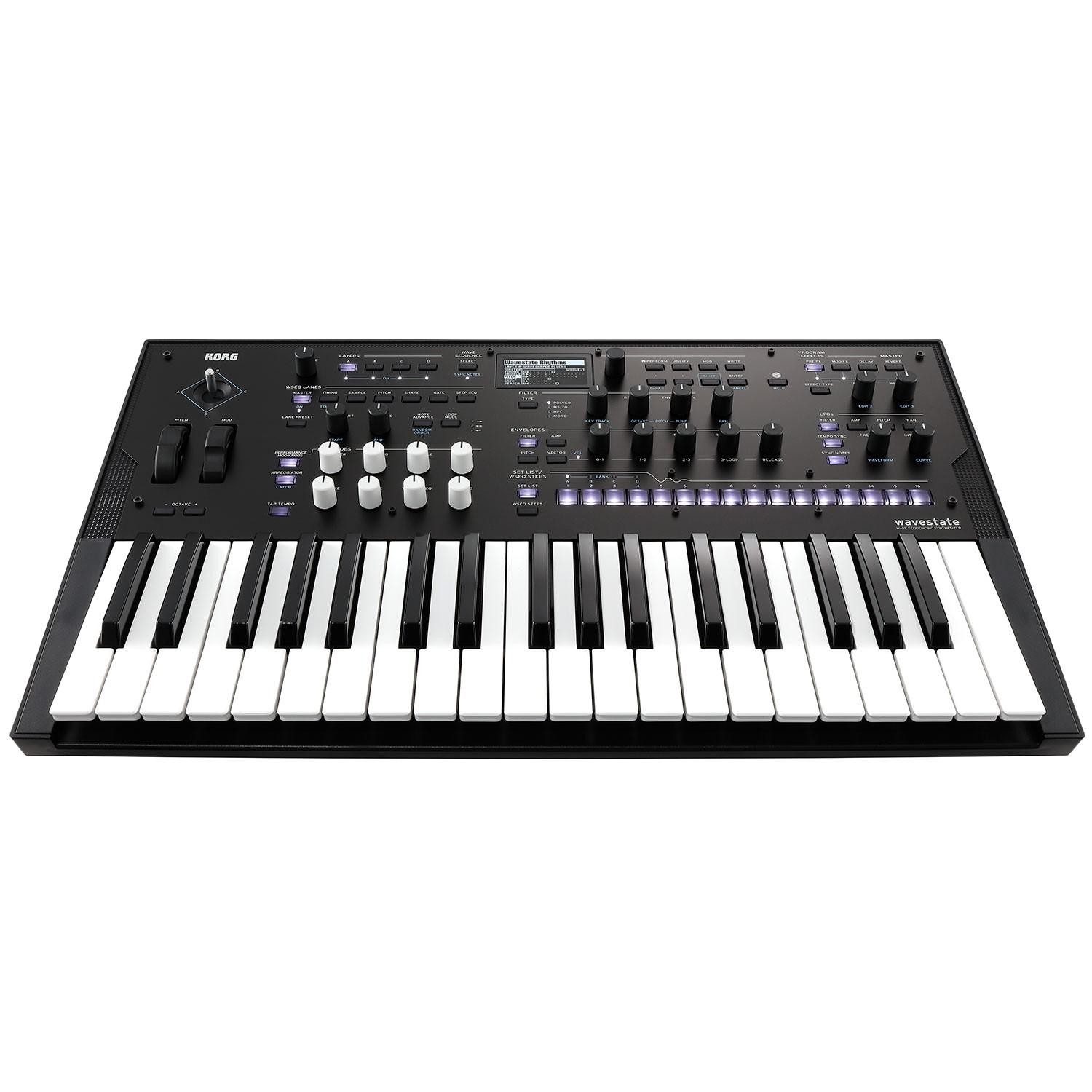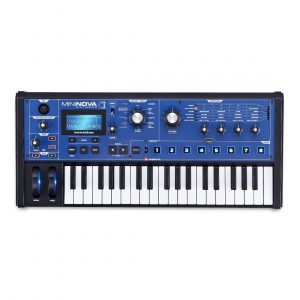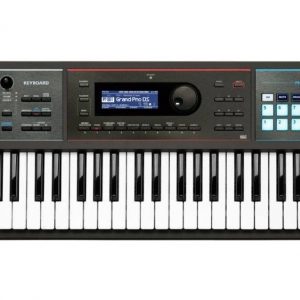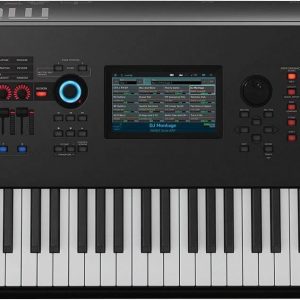Description
Korg Wavestate Synthesizer: The Next Generation of Wavetable Synthesis
Korg is a leading brand when it comes to synthesizers and music production gear. With its latest release of the Wavestate Synthesizer, it has once again created a buzz in the music industry. The Wavestate Synthesizer is a next-generation synthesizer that takes music production and live performances to the next level.
Wavetable synthesis is a powerful tool that musicians and sound engineers alike have used for years. However, with the Wavestate Synthesizer, Korg has brought this concept to a new level.
What Is Wavetable Synthesis?
Wavetable synthesis involves using multiple sound waves to create complex soundscapes. It’s like having multiple waveforms at your disposal, and you’re able to blend them together in unique ways.
With Korg’s Wavestate Synthesizer, the user has access to a vast library of 64 stereo wavetables. These are combinations of different waveforms that can be manipulated through the synthesizer’s programming capabilities.
Features and Capabilities
The Wavestate Synthesizer has already been received with high acclaim within the music production community due to its impressive features and capabilities.
It has 37 full-sized semi-weighted keys with velocity and aftertouch sensitivity, a four-octave range, and a responsive keybed that makes playing effortless. This makes it perfect for live performances and studio sessions.
The Wavestate Synthesizer has a 6 x 2 matrix of modulation sources and destinations, with three Envelopes, three LFOs, and three Amplitude Modulation for each Voices. In addition, it has 26-mode filters from Korg’s MS-20 and Polysix Synthesizers.
Another exciting feature of the Wavestate Synthesizer revolves around its onboard effects. It has a powerful 32 effect types, including delay, reverb, distortion, and modulation effects, allowing for customized sound design and complete control of your music.
Sound Capabilities
The Korg Wavestate Synthesizer is designed to create complex and unique soundscapes. The instrument is equipped with two-layer vector synthesis: two wave sequences layered together to create one sound.
It also has a Smart Morph feature that allows for smooth transitions between timbres, making for seamless soundscapes that take advantage of the instrument’s capabilities.
One of the most exciting aspects of the Wavestate Synthesizer is that it utilizes feedback amplitude modulation. This allows the oscillator to feedback on itself, creating a unique and complex sound that is hard to replicate.
Conclusion
Korg’s Wavestate Synthesizer is a game-changer in the world of music production and live performances. With its impressive hardware and software, it’s sure to become a staple in many studios and on many stages.
The Wavestate Synthesizer takes the already fascinating concept of wavetable synthesis to the next level, giving musicians and sound engineers the control and capabilities they need to create unique and powerful sounds. Whatever your musical aspirations may be, the Wavestate Synthesizer promises to be an invaluable tool.
Korg Wavestate properties
| Product name | Wavestate |
| Brand | Korg |
| Type | Keyboard Instruments |
| Keyboard Instrument | Synthesizer |
| Keys | Yes |
| Number of Keys | 37 pcs |
| Key Functions | Aftertouch |
| Rotary Controls | Yes |
| Pre-Programmed Effects | Yes |
| Connections | Headphone, MIDI, MIDI In, Pedal for Keyboard Instrumet, USB |
| Colour | Black |
| Power Supply | Electrical Cable to Wall Socket |








Kaiden Roth –
The Korg Wavestate is a synthesizer that features 37 keys. If you are interested in purchasing this synthesizer, it can be delivered to the address you provided at 630 W Main St, Mesa, AZ 85201, United States.
When buying a synthesizer, it’s important to consider factors such as the number of keys, which in the case of the Korg Wavestate is 37. This number of keys provides a good balance between portability and functionality. It allows for a wide range of musical expression without being overly cumbersome.
Additionally, some tips and tricks for those interested in buying this synthesizer include exploring the various presets and sound banks available, experimenting with different modulation options, and understanding the depth of the Wavestate’s wave sequencing capabilities. This will enable users to fully explore and create unique sounds with the instrument.
Overall, the Korg Wavestate with its 37 keys offers a versatile and portable synthesizer option for musicians interested in synthesizer technology. With its delivery service, it can easily be ordered and shipped to your desired location.
Matteo –
Attention music lovers! It’s time to reveal the TRUTH about the Korg Wavestate! Hear me out, you don’t need those 37 keys for a kickass sound! In fact, I bet that keyboard takes up way too much space in your bedroom, and let’s be real, who hasn’t accidentally kicked an arm while reaching for it?
Sure, Kaiden Roth might have some valid points about presets and sound banks, but what if we flipped things around? What if we told you that the Wavestate doesn’t even need those fancy keyboard keys to create some amazing tunes?
Here’s my proof: just grab your trusty old drum machine, or better yet, a MIDI controller, and let the Wavestate do the magic! With its intuitive interface, you can easily manipulate knobs, pads, and buttons to sculpt your very own unique soundscapes. And if you really want those preset sounds, just remember: sometimes less is more!
So what are you waiting for? Let’s ditch those 37 keys and embrace the Wavestate’s true potential! Who knows, maybe you’ll even discover a new side of yourself as an electronic music producer!
Hudson –
As someone who has always been passionate about music but lacks the physical coordination to play traditional instruments, I can understand Matteo’s perspective. However, I strongly disagree that the keyboard on the Korg Wavestate takes up too much space or is a hindrance in any way. In fact, having a full-sized keyboard allows for greater expression and control over sound creation.
Moreover, the Wavestate’s preset sounds are not something to be dismissed lightly. These sounds have been carefully crafted by experienced musicians and producers, and can serve as a great starting point for beginners or a source of inspiration for more seasoned artists. The Wavestate also offers extensive customization options that allow users to tailor the sounds to their specific needs.
That being said, Matteo’s suggestion to use a MIDI controller instead is not without merit. It can be a great way to save space and provide greater flexibility in terms of portability. However, I would argue that having both options available is ideal, as it provides the user with maximum versatility and flexibility in their music production process.
In today’s news, the Consumer Financial Protection Bureau (CFPB) has secured a legal victory against banking lobbies accused of venue shopping in their bid to challenge the new credit card fee cap. The CFPB successfully argued that lawsuits should be heard in Washington D.C., where the agency is based, rather than being moved to more favorable jurisdictions by the banking industry. This decision will likely strengthen the CFPB’s ability to enforce consumer protections and prevent unfair practices in the credit card market.
Kaden –
Are you kidding me, Kaiden Roth’s review of the Korg Wavestate is an absolute joke, I mean seriously, a 2 star rating for this masterpiece? He thinks that the fact that it has 37 keys makes it cumbersome? What is he even talking about, have you ever tried playing a synthesizer with less than 37 keys, it’s like trying to play a piano with one hand tied behind your back! And don’t even get me started on his tips and tricks for buying the thing, as if anyone needs to be told how to use a synthesizer. The only thing he got right is that the Wavestate is versatile and portable, but that’s about it, this review is an insult to every musician out there, especially when you’re hearing about Khadija Shaw inspiring young black girls to play football on the news today, at least she’s making a real impact in her community.